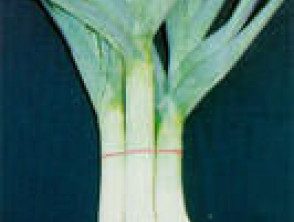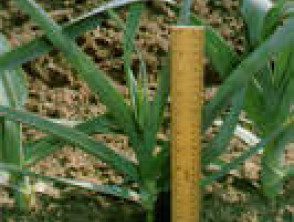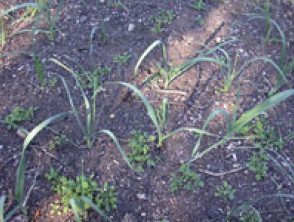| Common name: | Leek |
| Botanical name: | Allium porrum |
| Family: | Liliaceae, Amaryllidaceae |
| Origin: | Originally from the Eastern Mediterranean area and Asia, leeks have been cultivated for over 3,000 years and have been popular in Europe. |
| Description: | A hardy biennial vegetable grown as an annual. It has a thick, white, stem-shaped portion that is composed of succulent layers of strongly concentric leaf bases, each of which splits at the top to form a large, green, ribbed, strap-shaped leaf. |



| Applications: | Grown as a vegetable with a more refined, subtler, and sweeter flavor than standard onion. It is also cultivated for its aesthetic appearance, particularly as a display vegetable. |
| Allergens: | Diallyl disulfide |
| Allergy: | Urticariaallergic contact dermatitis as well as rhinoconjunctivitis, bronchial and exercise-induced asthma anaphylaxis. |
| Cross reactions: | Onion and garlic |
| Other information: | In 640 AD, the Welsh wore leeks in their hats to distinguish themselves from the enemy during the battle between King Cadwallader of Wales and the Saxons. The leek became an emblem of pride in Wales, and the Welshmen use the leek to commemorate King Cadwallader's victory on St. David's Day, March 1. The leek in Hebrew is called karti, which is a play on words with another Hebrew word yikartu, which means "to be cut off." Therefore, Jews eat leeks on Rosh Hashanah to symbolize the desire for enemies to be cut off. Nero ate leeks with oil regularly, thinking they were good for his singing voice. Perhaps Nero had the idea of Aristotle, who claimed that the partridge's clear cry was due to its diet of leeks. |
| Patch test: | sheet as is, diallyl disulfide |
